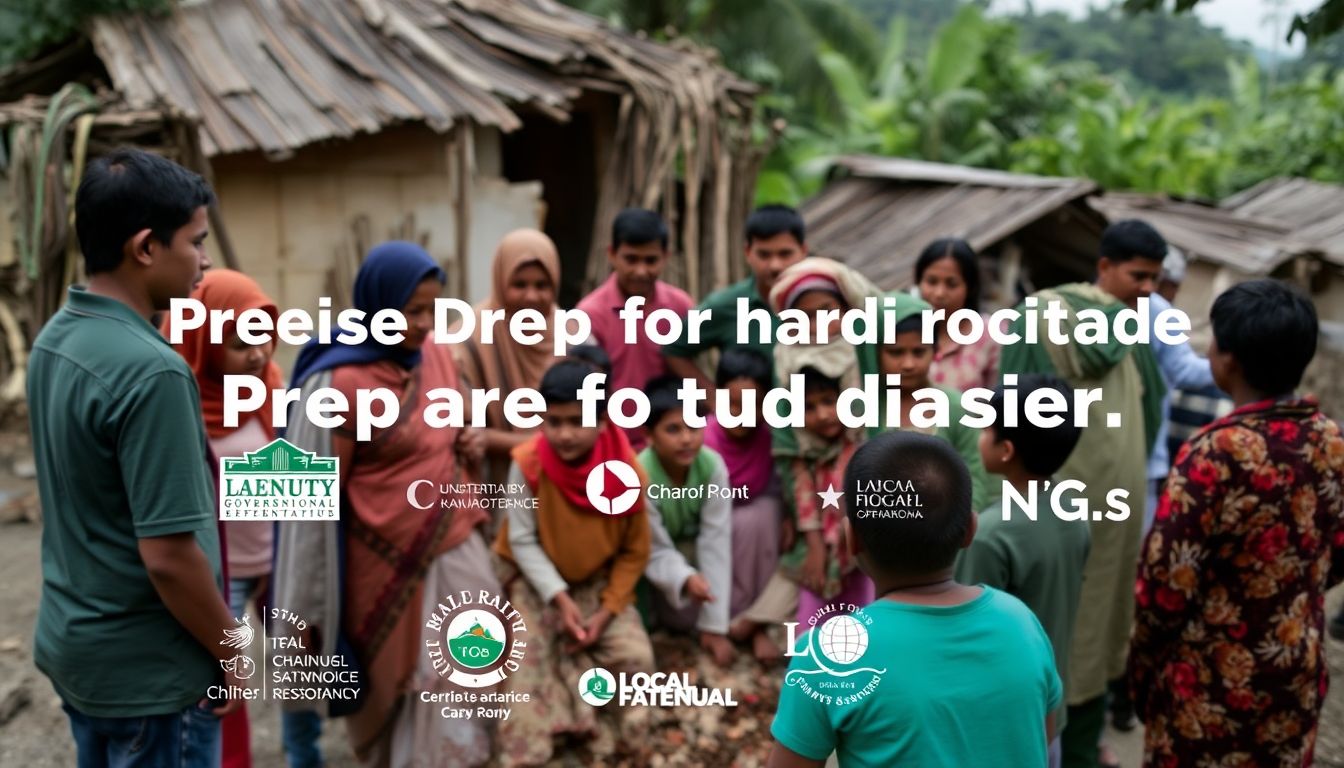In a stark reminder of the escalating frequency and severity of natural disasters in the United States, Deanne Criswell, the administrator of the Federal Emergency Management Agency (FEMA), recently revealed to CBS News that a major disaster declaration is now issued every two days on average. This alarming statistic, which has become the ‘new normal,’ underscores the urgent need for individuals, families, and communities to prepare for the inevitable.
As we step into 2024, the U.S. has witnessed an unprecedented surge in catastrophic events, from devastating hurricanes and wildfires to record-breaking floods and winter storms. According to FEMA’s data, the agency has responded to over 1,500 major disasters since 2017, with the annual cost of these events skyrocketing to hundreds of billions of dollars. This staggering figure not only strains federal resources but also raises concerns about the dwindling FEMA funds and the agency’s ability to sustain its critical mission.
But what does this ‘new normal’ mean for you and your loved ones? Are you prepared to face the next big disaster that could strike your community? The purpose of this article is to shed light on the growing threat of natural disasters in the U.S. and empower you with practical strategies to prep and survive these catastrophic events. By the end of this piece, you will have a clear understanding of the risks at hand, the importance of personal preparedness, and actionable steps to ensure your family’s safety and resilience in the face of adversity.
So, let’s dive into the fascinating yet sobering world of disaster preparedness. Let’s explore the science behind the increasing frequency and intensity of natural disasters, the challenges FEMA faces in responding to this escalating crisis, and most importantly, how you can become a proactive agent in your own safety and survival. After all, as the old adage goes, ‘Fortune favors the prepared.’
Navigating the New Normal: Prepping for the U.S.’s Unprecedented Disaster Landscape in 2024
As we step into 2024, the United States finds itself in an era of unprecedented challenges, with a shifting disaster landscape that demands a new approach to preparedness. The old adage of ‘hope for the best, prepare for the worst’ has never been more apt. The past few years have seen a perfect storm of natural and man-made disasters, from record-breaking wildfires and hurricanes to cyber attacks and social unrest. This new normal requires us to broaden our perspective on prepping, moving beyond the traditional focus on short-term survival to include long-term resilience and adaptability.
Firstly, it’s crucial to understand the unique threats we face in 2024. The U.S. is experiencing an increase in extreme weather events due to climate change, with more frequent and intense hurricanes, wildfires, droughts, and heatwaves. Meanwhile, technological advancements have brought new risks, such as cyber attacks on critical infrastructure and the potential for widespread power grid failures. Additionally, the COVID-19 pandemic has highlighted the importance of preparing for infectious disease outbreaks and the disruption they can cause to daily life.
Given this complex landscape, how can we prep for the new normal? The key lies in a multi-faceted approach that combines traditional survival skills with modern tools and a long-term perspective. This includes:
– **Diversifying Your Skills**: Learn a variety of skills that can help you adapt to different situations. This could range from first aid and gardening to basic construction and electronics repair.
– **Building a Support Network**: Connect with like-minded individuals in your community. A strong network can provide emotional support, shared resources, and a collective knowledge base.
– **Investing in Long-Term Supplies**: Stock up on non-perishable food, water, and essential medical supplies. Consider investing in renewable energy sources and off-grid systems for long-term sustainability.
– **Staying Informed**: Keep up-to-date with the latest developments in disaster preparedness and response. This can help you anticipate and adapt to new threats.
– **Preparing for the Worst, Hoping for the Best**: While it’s important to be prepared, it’s also crucial to maintain a positive outlook. Focus on the things you can control and remember that prepping is about more than just survival – it’s about building a resilient, adaptable life.

The Alarming Rise of U.S. Disasters in 2024
Provide an overview of the 179 disasters that struck the U.S. in 2024, their types (hurricanes, wildfires, floods, etc.), and the impact they had on communities and infrastructure. Discuss the unprecedented nature of this figure and its implications.

FEMA’s Role and the Catastrophic Funding Gap
FEMA, the Federal Emergency Management Agency, plays a pivotal role in the United States’ disaster response and recovery efforts. Established in 1979, FEMA is responsible for coordinating the response to natural disasters, acts of terrorism, and other man-made disasters. Its mission is to support citizens and first responders to ensure that as a nation we work together to build, sustain, and improve our capability to prepare for, protect against, respond to, recover from, and mitigate all hazards.
However, FEMA faces significant challenges in the face of increasing frequency and severity of disasters, a trend exacerbated by climate change. One of the most pressing issues is the dwindling funds available for disaster response and recovery. The primary cause of this funding gap is the fact that disaster relief is primarily funded through emergency supplemental appropriations, which are often delayed or insufficient. This leads to a cycle where FEMA’s Disaster Relief Fund (DRF) is repeatedly depleted, leaving the agency with insufficient funds to respond to subsequent disasters.
The impact of this funding gap on affected communities is profound. Delays in funding can lead to slowed recovery efforts, leaving communities vulnerable to further damage and disruption. Moreover, the funding gap can exacerbate existing inequalities, as low-income communities and communities of color are often disproportionately affected by disasters and have fewer resources to recover.
To address this issue, several steps can be taken. Firstly, Congress could provide FEMA with advance appropriations, ensuring that the agency has sufficient funds to respond to disasters without having to wait for emergency supplemental appropriations. Secondly, states and local governments can take steps to improve their own disaster preparedness and resilience, reducing the need for federal assistance. Lastly, individuals and families can also play a role by creating their own emergency plans and preparing emergency supplies, reducing their reliance on federal assistance in the event of a disaster.

FEMA Administrator Deanne Criswell’s Perspective
In a recent interview with CBS News, Deanne Criswell, the Administrator of the Federal Emergency Management Agency (FEMA), provided valuable insights into the current disaster landscape and the challenges her agency faces. Criswell emphasized the increasing frequency and severity of natural disasters, highlighting the urgent need for communities to prepare and adapt. She noted that climate change is exacerbating these events, with hurricanes, wildfires, and flooding becoming more intense and destructive.
Criswell acknowledged that FEMA is facing significant challenges in responding to these disasters. She cited the strain on resources, the complexity of coordinating responses across multiple jurisdictions, and the need to balance immediate relief with long-term recovery efforts. She also underscored the importance of partnerships, stressing that FEMA cannot do it alone and that state, local, and private sector collaboration is crucial.
In response to these challenges, Criswell called for action on several fronts. She emphasized the need for communities to invest in mitigation efforts to reduce disaster risk, such as improving infrastructure and building codes. She also stressed the importance of individual preparedness, urging people to make emergency plans, build emergency supply kits, and stay informed about potential threats in their area. Additionally, Criswell called for increased investment in technology to improve FEMA’s ability to track and respond to disasters in real-time.
Criswell’s perspective underscores the urgent need for all levels of society to take disaster preparedness seriously. By investing in mitigation, improving individual preparedness, and fostering collaboration, we can better protect our communities from the increasing threat of natural disasters.

The Human Impact: Stories from the Ground
Share stories of Americans affected by the 2024 disasters, highlighting their resilience, struggles, and the support they received from FEMA and other organizations. Discuss the emotional and psychological toll of these events.

Prepping for the ‘New Normal’: Essential Steps for Survivors
Prepping for the ‘New Normal’: Essential Steps for Survivors

Strengthening Communities: The Role of Local Governments and NGOs
Strengthening Communities: The Role of Local Governments and NGOs

Advocating for Change: Calling on Our Leaders
In the face of escalating natural disasters, it’s clear that the U.S. needs to bolster its resilience. One of the most significant barriers to this is the funding gap that hinders our ability to prepare, respond, and recover effectively. But we, as citizens, hold the power to advocate for change and urge our leaders to prioritize this critical issue.
The first step in advocating for change is to raise awareness. Share stories of resilience and the challenges faced by communities affected by disasters. Use social media platforms to reach a wider audience and engage with your local community. Encourage friends, family, and neighbors to join the conversation and amplify your voice.
Next, identify your elected officials. Knowing who represents you at the local, state, and federal levels is crucial. You can find this information on the U.S. House of Representatives and U.S. Senate websites, or by using a simple online search.
Once you’ve identified your representatives, it’s time to reach out. Here are some tips on how to contact them effectively:
- Phone Calls: Call their local or Washington D.C. offices. Be polite, concise, and clear about your concerns and the changes you’d like to see.
- Emails: Send an email outlining your position. Personalize it by mentioning how disasters have affected you or your community.
- Letters: Handwritten letters can make a strong impression. They’re less common, so they may even get more attention.
- Social Media: Engage with your representatives on platforms like Twitter and Facebook. Use relevant hashtags to increase visibility, such as #DisasterResilience or #FundOurFuture.
Remember, persistence is key. Don’t be discouraged if you don’t see immediate results. Keep raising your voice and encouraging others to do the same. Together, we can advocate for the policy changes that will make our nation more resilient and better prepared for the challenges ahead.









